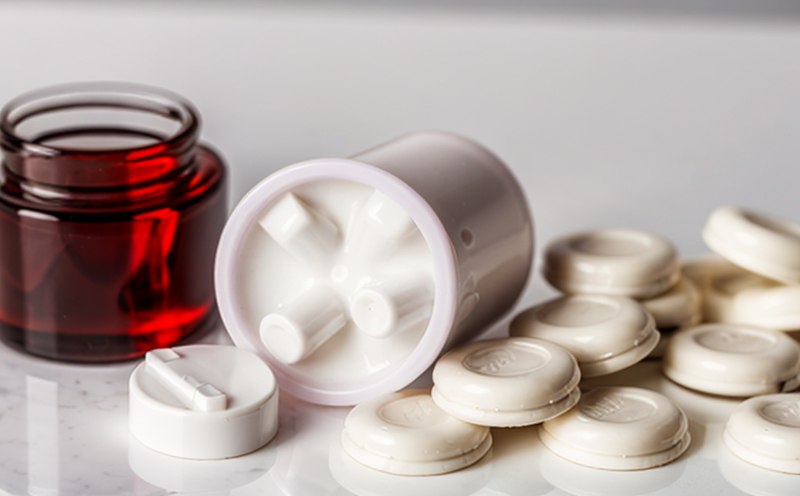USP Content Uniformity Testing of Tablets
In the pharmaceutical industry, ensuring that each tablet contains its prescribed active ingredient in a consistent and accurate manner is paramount. The United States Pharmacopeia (USP) content uniformity testing ensures this consistency by assessing the variability in drug content among individual tablets within a batch. This test is critical for maintaining product quality and patient safety.
The USP Content Uniformity Testing method is designed to evaluate the homogeneity of active ingredients across multiple tablets. It is particularly important for solid dosage forms like tablets, where small variations in drug content can significantly impact therapeutic efficacy and patient outcomes. Compliance with this test ensures that a batch of tablets meets the specified quality standards as outlined by USP.
The testing protocol involves dissolving a specific number of tablets (typically 10) in a suitable solvent under controlled conditions and then measuring the amount of active ingredient in each solution using analytical techniques such as high-performance liquid chromatography (HPLC). The results are compared against predetermined acceptance criteria to determine if the batch is uniformly consistent.
The significance of USP content uniformity testing extends beyond compliance. It helps manufacturers maintain product integrity, enhance brand reputation, and ensure regulatory adherence in a highly competitive market. By adhering to this stringent test protocol, pharmaceutical companies can produce reliable products that meet or exceed industry standards.
- Compliance: Ensures adherence to USP monographs for tablets.
- Patient Safety: Minimizes the risk of variability in drug efficacy and side effects.
- Product Integrity: Maintains consistent quality across production batches.
- Regulatory Compliance: Meets USP, FDA, and other regulatory agency requirements.
The process begins with selecting a representative sample of tablets from the batch. Each tablet is then weighed accurately and placed in an appropriate solvent for dissolution. Dissolution media such as water or simulated gastric fluid may be used depending on the drug's properties and intended use. After dissolution, the solutions are filtered to remove any insoluble residues.
The filtered solutions are analyzed using analytical techniques like UV-Vis spectrophotometry or HPLC to quantify the active ingredient content in each sample. The results are compared against predefined acceptance criteria established by USP. Typically, the average drug content of all tablets should be within 7% of the labeled amount, and no single tablet should deviate more than 15% from this average.
Failure to meet these criteria indicates non-uniformity in the batch, necessitating further investigation or reprocessing. This level of precision is crucial for maintaining the efficacy and safety of pharmaceutical products. The USP method provides a standardized approach that ensures consistency across different batches and manufacturing sites.
Why Choose This Test
The USP Content Uniformity Testing is essential for ensuring that each tablet contains its active ingredient within specified limits. By choosing this test, you are prioritizing patient safety and maintaining the integrity of your product. Here’s why:
- Avoids Variability: Ensures consistent drug content across tablets.
- Enhances Reputation: Builds trust with consumers by delivering reliable products.
- Compliance Assurance: Ensures adherence to USP and FDA standards, reducing the risk of regulatory issues.
- Cost-Effective: Prevents costly recalls and legal disputes by ensuring product quality from the outset.
The test provides peace of mind for manufacturers, compliance officers, and R&D engineers. It ensures that each batch meets stringent quality standards, thereby protecting patients and maintaining regulatory compliance. This testing is a critical component in upholding the highest levels of pharmaceutical excellence.
International Acceptance and Recognition
The USP Content Uniformity Testing enjoys widespread acceptance and recognition globally. It has been adopted by various regulatory bodies, including the FDA (Food and Drug Administration) in the United States, EMA (European Medicines Agency), and other national drug regulatory authorities.
Regulatory agencies around the world recognize the importance of uniformity testing in ensuring product quality and patient safety. Compliance with USP standards is mandatory for pharmaceutical companies operating internationally. This recognition ensures that products meet high-quality standards across different markets, enhancing their marketability and acceptance worldwide.
The United States Pharmacopeia has a long history of setting rigorous standards for pharmaceuticals, and its content uniformity testing method is widely respected. The USP’s global reach extends to over 170 countries, ensuring that products meet consistent quality benchmarks regardless of location.
Competitive Advantage and Market Impact
In a highly competitive market, maintaining product integrity and meeting regulatory standards can give you a significant advantage. By adhering to USP Content Uniformity Testing, your company demonstrates its commitment to quality and patient safety.
The consistent results from this testing ensure that each tablet in the batch is uniform, enhancing consumer confidence and trust. This can translate into increased market share as consumers prefer brands they know are reliable and safe.
Compliance with USP standards also opens doors for international expansion. Regulatory bodies worldwide recognize the importance of adhering to these guidelines, making it easier for pharmaceutical companies to enter new markets without facing additional hurdles or delays.
In an era where patient safety is paramount, ensuring consistent drug content is not just a regulatory requirement but also a moral obligation. By choosing USP Content Uniformity Testing, you are setting yourself apart from competitors and establishing a reputation for excellence in the industry.





